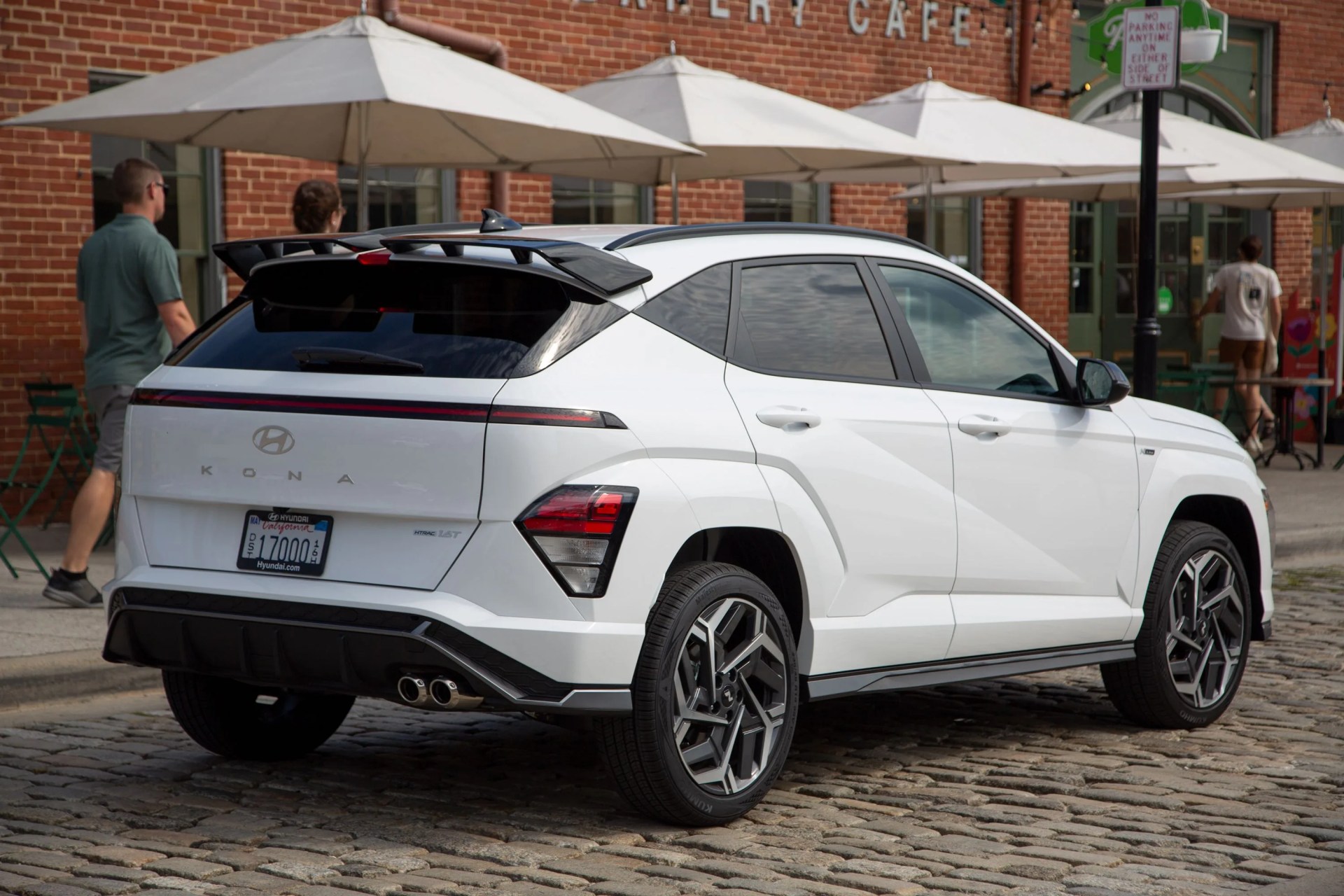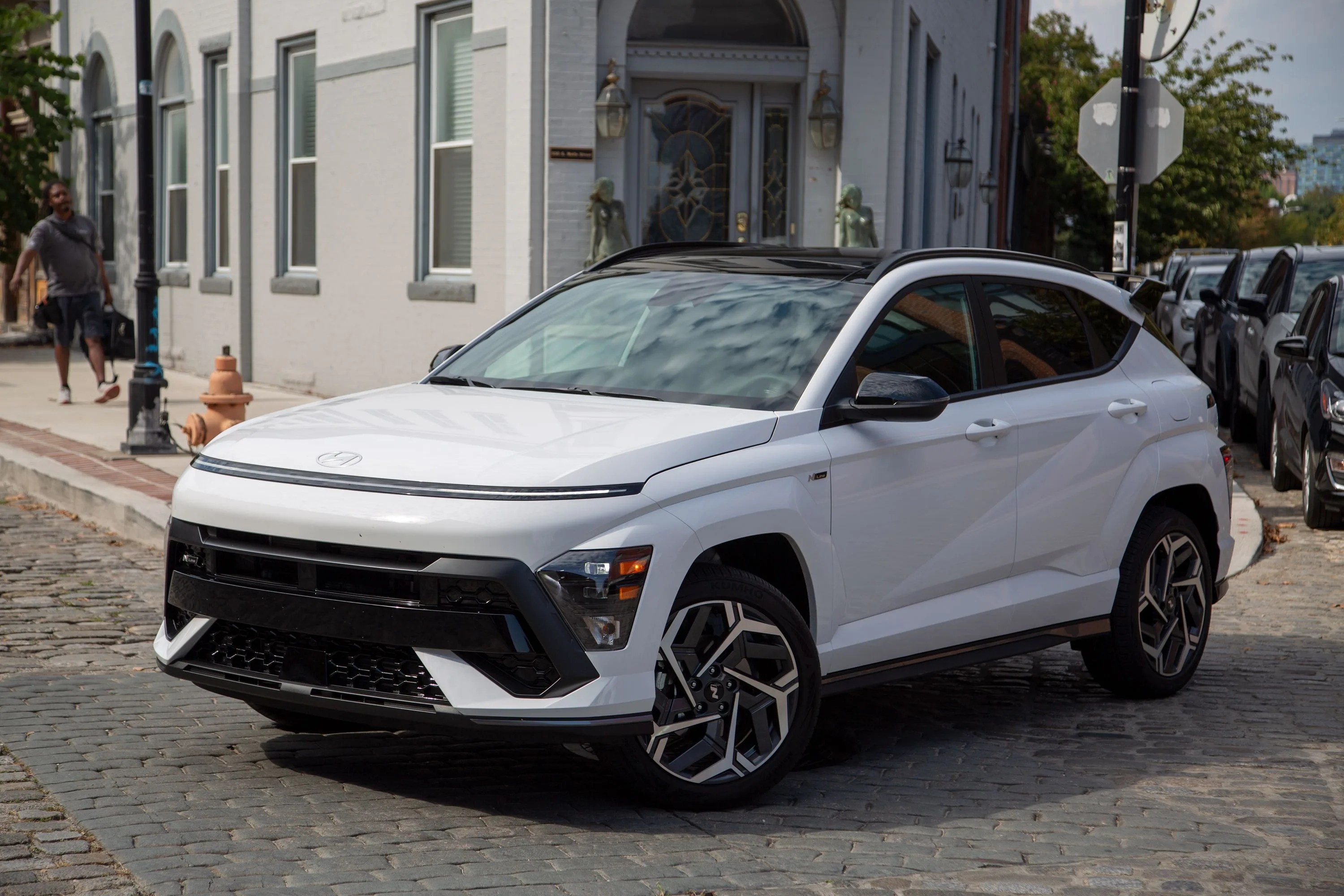If you’re in the market for a compact crossover these days, you’ll find yourself in something of a golden era for the category. From Acura to Volkswagen, there are small car-based SUVs available for all sorts of tastes; mild to wild, slow to sporty, frugal to fancy, it’s easy to find something for you.
Since 2017, the Kona — named, in traditional Hyundai SUV fashion, after a place your parents would probably go on vacation — has served as the starter crossover for the company’s American shoppers. (Technically, the Hyundai Venue is the most affordable option, but as it lacks AWD and is more in line with a typical hatchback in size and height, calling it an SUV is a bit of a stretch. Besides, if it were an SUV, it’d be named after a destination.) It made a solid splash in the marketplace, racking up hundreds of thousands of sales since it arrived in 2017 and even spawning a tire-shredding Kona N performance variant.
Now, for the 2024 model year, there’s a whole new Kona in town — one meant to better compete against the latest and greatest compact crossovers with added features and refinement and a very new face. To find out if it’s worth your hard-earned cash, I took it for a drive around the urban, suburban and rural roads leading out from Baltimore into the Maryland countryside. Here’s what I learned.
2024 Hyundai Kona: What We Think
Unlike the 2024 Kia Seltos, The ’24 Kona is more than a facelift; it’s a whole new car, with expanded wheelbase and new features found under the skin. Still, it’s the new design that’s most likely to draw attention; it’s thoroughly polarizing and almost alien, making it stand out in a category filled with many a milquetoast design.
If the styling works for you, you’ll find the rest of the package to be a pleasant enough experience. The driving experience won’t inspire sonnets, but it’ll move you from A to B in peace and relative quiet. The car comes laden with technology and ideas designed to streamline its owner’s life, from ample active safety features to ventilated seats, at a far lower price point than many vehicles. It’s ultimately more appliance than enthusiast machine, but if that’s what you — like many buyers — are looking for, it sells itself well based on its features.
To learn more about our testing methodology and how we evaluate products, head here.
The 2024 Kona’s design is, well, a lot
 Will Sabel Courtney
Will Sabel CourtneyCredit to Hyundai for taking some big swings with their designs lately, but it works better for some cars than others. The Ioniq 5 is a bona fide retro-future vision, and the new Santa Fe brings old-school Land Rover looks to the affordable crossover realm. On the flip side, the Ioniq 6 looks like a first-gen Mercedes-Benz CLS-Class that was left in the microwave too long, and the new Kona is … well, let’s just say a lot.
The design is as polarizing in person as it is in pictures, too. The wide, thin LED strip across the hood looks almost too sci-fi, bringing to mind Geordi LaForge or Scott Summers. Surprisingly, the additional body-colored trim of the Limited does little to even out the looks; I found the N Line to be a bit more pleasant to eyeball, as its extra gray body cladding gives it a little more angry edge that suits the design well. Still, regardless of trim, it looks oddly faceless and even a bit off-putting, at least to my eyes. Beauty is in the eye of the beholder, I suppose.





